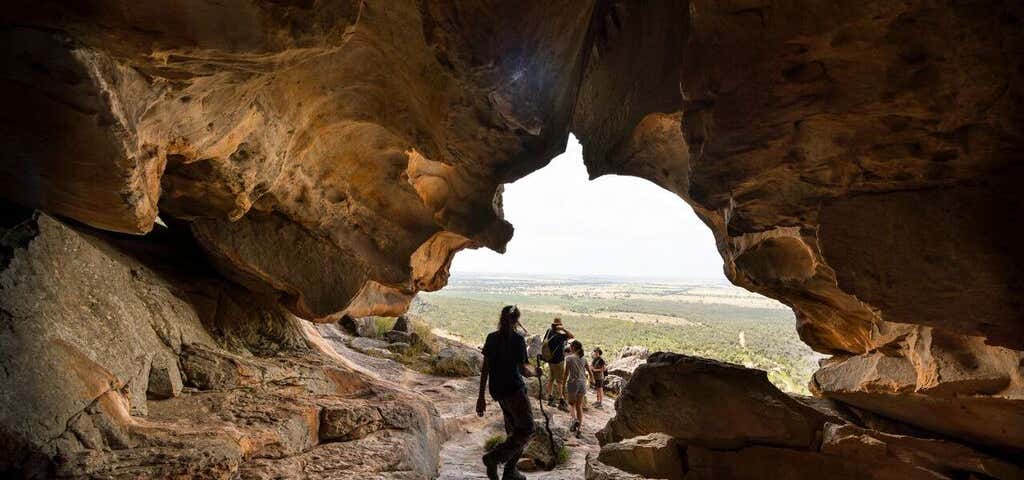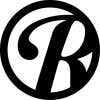Take a journey through Australia's golden history and the golden wheat belt of the Wimmera as you drive between the two southernmost capital cities on the Australian mainland. Often considered the functional route in comparison to the coastal wonder of the Great Ocean Road, this drive strings together a surprising selection of worthy sights. You can relive epochal moments in Australian history, see giant wheat silos transformed by street art, visit one of the world's top rock-climbing destinations and then tuck into waffles. Getting there is indeed half the fun on this highway drive.


"Grampians National Park"
1
Lake House
Make a stylish exit from Melbourne with a first stop in spa country. Daylesford's reputedly health-affirming mineral springs have been luring Melbournians for more than a century, and the feel of the town is one part English-style afternoon tea and two parts soothing day spa. The town's setting, wrapped around lakes and hills, is as therapeutic as the waters. (There are also plenty of spa options around town and nearby Hepburn Springs.)
Lunch or dinner at the Lake House on the shores of Lake Daylesford is almost compulsory if you want the true Daylesford experience.
2
Booktown
The goldfields region of central Victoria is dotted with towns with grand streetscapes that gold built. Before returning to the Western Highway, detour north into Clunes, the site of Victoria's first gold discovery in 1851- a find that sparked one of the world's biggest gold rushes. Wander Clunes' quiet main street, with its intact gold-rush-era buildings, and it's hard to believe this was once one of Victoria's largest towns. The modern gold here is books, with more than half a dozen bookstores now filling the historic storefronts.
Clunes has even been recognised as an International Booktown – the only one in Australia. Come in May and you might just be here for the Clunes Booktown Festival.
3
Museum of Australian Democracy at Eureka
The Eureka Rebellion remains a moment of significant national pride in Australia. At the Eureka Stockade in Ballarat in 1854, miners raised the Southern Cross flag and took a stand against authority. This engaging museum stands on the site of the Stockade, and details the rebellion, in which more than 20 miners were killed, as well as tracing the development of democracy across Australia and the world. The star exhibit is unquestionably the pieced-together remnants of the Southern Cross flag that flew at the Stockade - a flag design that many consider just as Australian as the national flag.
Ballarat is Victoria's third-largest city and the heart of the goldfields region, and it's worth building in time here to get a real sense of the gold rush. The city's most famous attraction is Sovereign Hill, a re-created gold mining village that successfully captures the gold fever of the mid 19th century. Gold-era facades and costumed actors line the village's main street, and you can pan for gold in what was in its day a working goldfield. If you're in Ballarat for the evening, come to Sovereign Hill for Blood on the Southern Cross, a sound-and-light show that relives the Eureka Stockade battle.
5
Mount Buninyong
As you enter Victoria's western plains, vantage points are few and far between, so swing briefly south from Ballarat and drive to the summit of the extinct volcano, Mt Buninyong (or park at the Blackberry Lane picnic area and hike the three kilometres to the top). On the finest of days, views from the summit lookout tower can extend back to Melbourne's city towers and west to the Grampians. Don't just look to the horizon though - peer into the trees because the eucalypt forest on Mt Buninyong is a major koala habitat.
6
Gum San Chinese Heritage Centre
Pay final homage to the gold rush by visiting the Gum San Chinese Heritage Centre in Ararat, which tells a story with a different accent - that of the often-forgotten Chinese miners who worked Victoria's goldfields. Near to here, a group of Chinese men heading for the goldfields discovered a shallow alluvial gold seam (which, suitably, was named the Canton Lead) in the 1850s. Built in Chinese style, the heritage centre details the story of the Chinese gold prospectors and the development of Chinese culture in Australia.
7
Seppelt Winery
For a small highway town, Great Western packs a big punch (and a lot of history) in the wine world.
At the birthplace of sparkling shiraz, take a tour through Seppelt's incredible underground 'drives' - the cellar, started by out-of-work gold miners, extends for three kilometres, making it the largest in the southern hemisphere.
As you leave town, you'll also pass Best's, a winery where the original block of vines was planted in 1866 - one vine planted here that year is believed to be the oldest pinot noir vine in the world. The cellar door is inside stables built in the 1860s. As well as tastings, you can take a self-guided tour through the ancient cellars.
9
Stawell Gift Hall of Fame
Mention the town of Stawell to an Australian and they're likely to reply with one phrase: the Stawell Gift. Australia's richest, and arguably most famous, running race is held in Stawell each Easter, but if you're passing through at any other time of year, pay a visit to the Stawell Gift Hall of Fame in the town's Central Park. The Hall of Fame features memorabilia and footage dating back to the first Stawell Gift in 1878 (when the winner received a pig!) The race has been a magnet for big-name runners, including world champions such as Cathy Freeman, Asafa Powell, Sally Pearson and Linford Christie.
Across the Wimmera plain, the things that stand tallest aren't usually mountains or trees. They're grain silos. North of the highway, half a dozen of these silos are being converted into the Silo Art Trail in what will become Australia's largest outdoor art gallery. Street artists have already turned four silos into giant canvases. The nearest one to the highway is in tiny Rupanyup, 50 kilometres north of Stawell, where Russian artist Julia Volchkova has painted massive monochrome portraits of a footballer and netballer. If time and distance are no issue, the Silo Art Trail continues all the way to Patchewollock, 160 kilometres north of Rupanyup.
11
Harvest Halls Gap
Swing back south of the highway and you come to western Victoria's major natural attraction, the sandstone Grampians mountains. The range has long been a popular outdoors playground for holidaymakers, but the area is also fast emerging as a foodie favourite. You can spend hours touring farm gates and cellar doors, or simply head to Halls Gap and pop into Harvest Halls Gap, a cafe and provedore where almost everything on the menu and shelves, from the sheep yogurt to the olives and pork rillettes, has been grown and produced locally. If that whets your appetite, the cafe also publishes a map of local producers you can visit.
12
Royal Mail Hotel
As you stand atop the bare sandstone flanks of the Grampians, you might be surprised to learn that you're almost in sight of one of the great dining (and wining) destinations in Australia. In Dunkeld, at the southern foot of the Grampians, the Royal Mail Hotel is a country pub turned gastronomic wonder. Produce is sourced from the hotel's own organic garden, orchards and olive groves. Try the eight-course chef's tasting menu, which comes matched with wine. If you prefer to choose your own tipple, the wine list extends to more than 100 pages and 25,000 bottles! A UK wine magazine once named it the best hotel wine list in the world.
Rising above Halls Gap, the Grampians form a long string of waterfalls, wildlife and otherworldly sandstone shapes. The best way to see the range is on foot. Hike up from Halls Gap through the narrow Silent Street chasm to a thumb of rock known as the Pinnacles that overhangs Halls Gap, or take a shorter walk to the Balconies where a sandstone ledge protrudes like a beak. If you want a wildlife treat, head for Halls Gap's oval in the evening, when its lawns fill not with cricketers or footballers, but with large mobs of grazing kangaroos.
14
Giant Koala Restaurant Tourist Complex
If you return to the highway at Stawell and turn west again, you'll quickly pass through Dadswells Bridge, where you'll see - what the...? - yes, that is a giant koala with twigs sticking out of its ears. Dadswells Bridge's contribution to Australia's roadside collection of big things is this four-storey-high koala constructed from more than 12 tonnes of material. It may not look exactly lifelike - that's half the fun - but you can step inside it to find a gift shop, or head out the back to view and feed a variety of animals, including a koala...of course.
Say the word "Arapiles" to a rock climber and watch their eyes glaze over with pleasure. This isolated sandstone mountain, 35 kilometres off the Western Highway at Horsham, is one of the world's most famous climbing sites. The craggy peak itself is quite small, but beautiful, especially in the glow of sunrise or sunset. There are more than 2000 climbing routes on Arapiles, catering to all abilities. If you want to really soak up the climbing vibe, pitch a tent in the Pines campground at the base of the mountain - this is virtual base camp for Arapiles. From the camp, follow walking trails to the walls, where you can lie back and watch climbers spidering their way up the crags.
15
Little Desert National Park
From the mountains to the desert, in just a few kilometres. South of the highway at Dimboola and Nhill, this national park is edged against the Wimmera River. The name is a misnomer - it's not a desert - and its vast mallee heathlands fill with spring and summer wildflowers, turning the park into a classic outback-like palette of colours during theses hotter seasons. Driving around much of the sandy park requires a 4WD, but there are some great walks, and the chance to see the park's star resident - the malleefowl with its giant nest mounds. You can find a mound (and hopefully a malleefowl) on the short Keith Hateley Nature Walk at the Sanctuary picnic ground close to the highway.
16
Bob Hawke Gallery
If you imagine yourself posing beside a border marker in Bordertown, think again. The first town across the state line into South Australia, Bordertown is 20 kilometres from the actual border, but it holds a cherished place in modern Australian history. Bordertown was the birthplace of Australia's favourite larrikin prime minister, Bob Hawke (who once also held a world beer-drinking record). Have a wander through the Bob Hawke Gallery.
17
Civic Centre Walkway
And find a bronze bust outside the Civic Centre.
18
Waffles & Jaffles
Tiny Coonalpyn may look unprepossessing, but it's here that you'll find one of the best highway snack stops in the land. A hole-in-the-wall servery framed with a pair of blackboards, Waffles & Jaffles dishes up exactly what the name on the tin suggests: Dutch-style waffles and Aussie-style jaffles (toasted sandwiches). Grab one of the tables by the roadside and then wander the art sites that have transformed Coonalpyn, from a large mosaic to a 30-metre-high silo mural, painted in 2017, of a handful of the town's children.
Explore More Trip Guides
Explore The SouthWest
- 46 Places
- 51:16
- 2,083 mi
Great Alpine Road
- 17 Places
- 10:00
- 414 mi
Hobart - Swansea Weekend Roadie
- 16 Places
- 08:30
- 315 mi




















